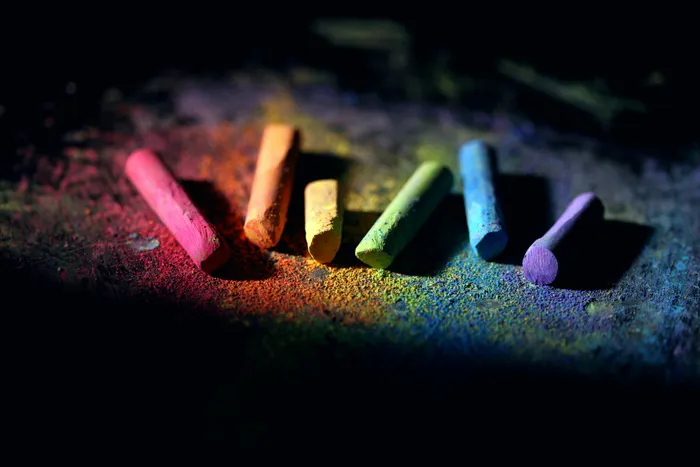Ever craved soil or chalk? Experts unpack pica, the eating disorder behind this

According to experts, the exact causes of Pica remain a mystery, but there are several risk factors that could play a role in its development. Picture: Alexander Grey /Unsplash
FOR many of us cravings can range from midnight munchies to wanting to pickles. But what about big bites of chalk or a mouthful of dirt? Well, that’s the reality for some folks dealing with pica, a condition where the appetite goes beyond the usual menu.
And guess what? Yours truly has had a personal tango with this condition.
Now, don't get me wrong, I love a good whiff of freshly laundered clothes as much as the next person, but for me, the allure of that crisp, clean detergent scent was just too tempting.
It was my little secret indulgence until I realised it might not be the healthiest choice, especially when I had a little one on the way. Let's just say my days of savouring eating of detergent are now a thing of the past!

Pica, the eating disorder involving the consumption of non-food items like dirt, chalk, or even laundry detergent, often goes unnoticed.
Independent Media Lifestyle spoke with registered dietitians to gain valuable insight into this disorder.
What is pica and how is it defined in the context of nutrition and eating behaviours?
Retha Harmse, an dietitian expert in contemporary issues in early childhood, believes this behaviour is developmentally inappropriate and culturally and socially unacceptable.
“Pica is a disorder characterised by persistent cravings for and consumption of non-nutritive substances over a period of at least one month.
“In the context of nutrition and eating behaviours, it’s defined as the ingestion of items that are not typically considered food and that lack significant nutritional value.”
What are some common types of non-nutritive substances that people with pica may crave and consume?
Ice, dirt, clay, chalk, hair, paint chips, paper, soap, starch (e.g., laundry starch) and wool
What are the potential causes or underlying factors that contribute to the development of pica?
According to experts, the exact causes of pica remains a mystery but there are several risk factors that could play a role in its development.
Harmse said these factors can be quite complex and varied.
They may include nutritional deficiencies like iron deficiency (anaemia), mental health disorders such as autism spectrum disorder and obsessive-compulsive disorder (OCD), hormonal changes during pregnancy, cultural or familial practices, exposure to toxins, and sensory or oral exploration behaviours, especially in children and individuals with developmental disabilities.
How does pica affect an individual's nutritional status and overall health?
In the world of pica, people are consuming things that aren't food, which means they're missing out on important nutrients. This can lead to all sorts of problems, like feeling weak and tired because their bodies aren't getting what they need.
Registered Dietician Lara Naidoo said: "In children, this could lead to failure to thrive, like being underweight or not growing properly."
Harmse added: "Gastrointestinal complications, like blockages in the digestive tract, toxicity from harmful substances, and dental injuries from chewing on non-food items, are all possible risks."
Who is at more at risk for developing pica?
Pica can affect anyone but it's most commonly observed in pregnant women, young children (under 6 years old) and individuals with mental health conditions like autism or schizophrenia.
It's also prevalent in people with specific mental health disorders such as OCD or schizophrenia.
How can dietitians and healthcare professionals best support individuals who exhibit signs of pica?
“Dietitians and healthcare professionals should work closely together to support and help individuals with pica. It’s important that these individuals do not feel judged or ashamed and therefore the multidisciplinary team needs to treat these patients in a non-judgemental manner,” said Naidoo.
Are there any effective treatment approaches or interventions for managing pica and addressing the underlying causes?
According to Naidoo, the most common methods for treating pica involve behaviour modification, nutritional counselling, medical supervision, and sometimes medication, especially when psychological conditions are involved.
"These approaches aim to help individuals learn coping skills and replace the behaviour with healthier alternatives.“
Harmse said: "Behavioural therapy, like cognitive-behavioural therapy or habit reversal training, can be really helpful. And for those with co-occurring mental health disorders like OCD or schizophrenia, medication may also be part of the treatment plan."
What are some myths about pica
Myth: Pica is a childhood disorder.
Fact: Pica can be seen in any age group.
Myth: Pica is simply a behavioural issue or a sign of laziness.
Fact: Pica is a complex disorder with potential underlying medical, nutritional, and psychological causes that require professional assessment and intervention.
Myth: Children putting objects in their mouths is an example of pica.
Fact: Children under the age of two often put objects and toys in their mouths because they are exploring different senses. Therefore, it is not pica. A person is diagnosed with pica when they are intentionally ingesting non-food items.
Myth: Pica and pregnancy cravings are the same thing.
Fact: Pregnancy cravings are usually for specific food items whereas in pica, the craving is for non-food items that can be harmful.
Myth: Pica is harmless and doesn't pose any health risks.
Fact: Pica can lead to serious complications, including nutritional deficiencies, gastrointestinal issues, and poisoning, which can negatively impact overall health and well-being.
Related Topics: